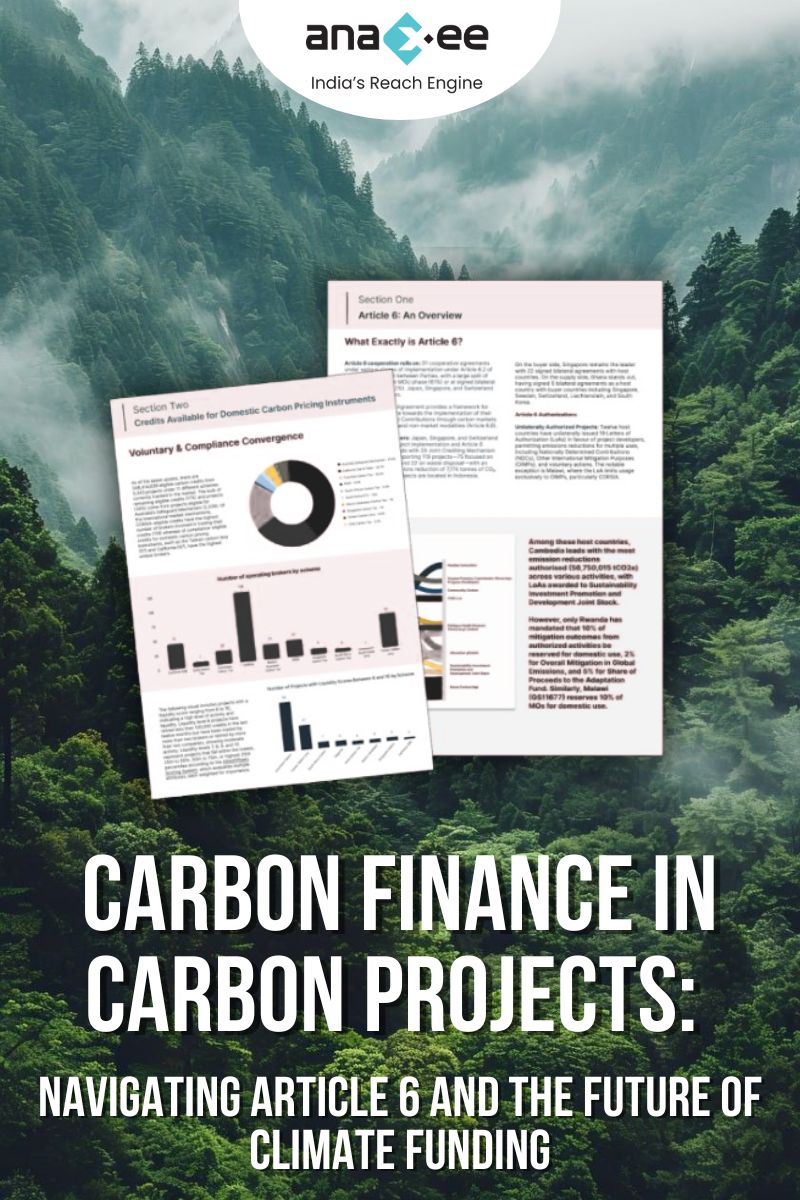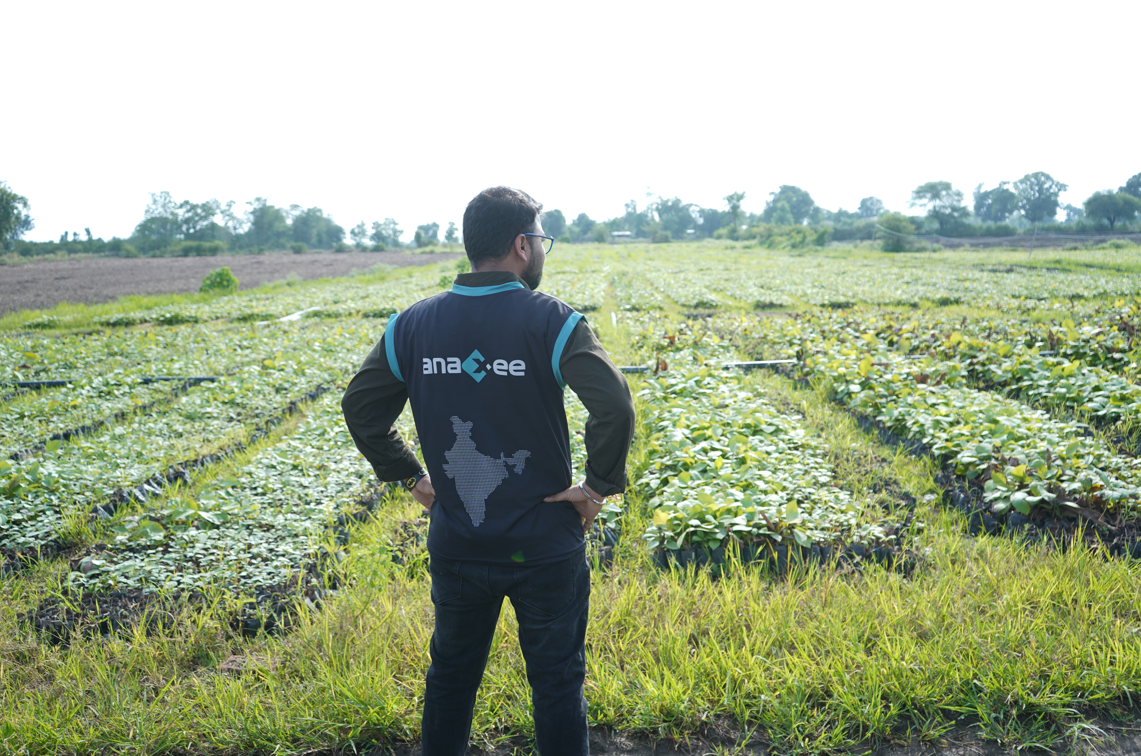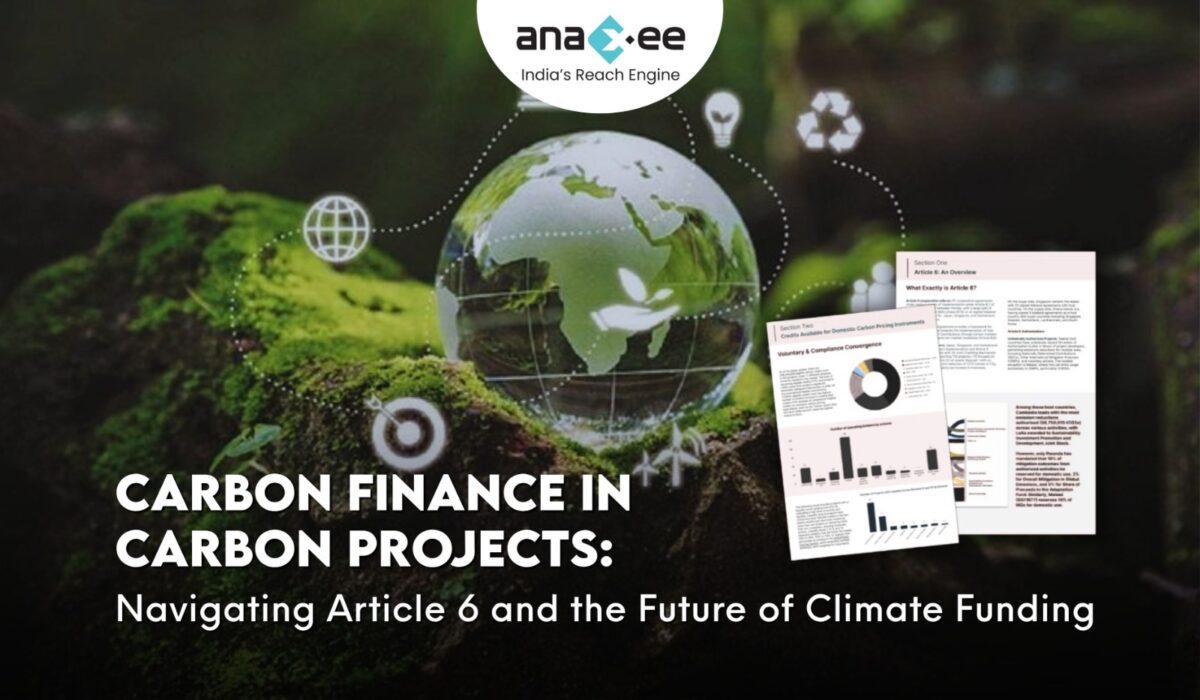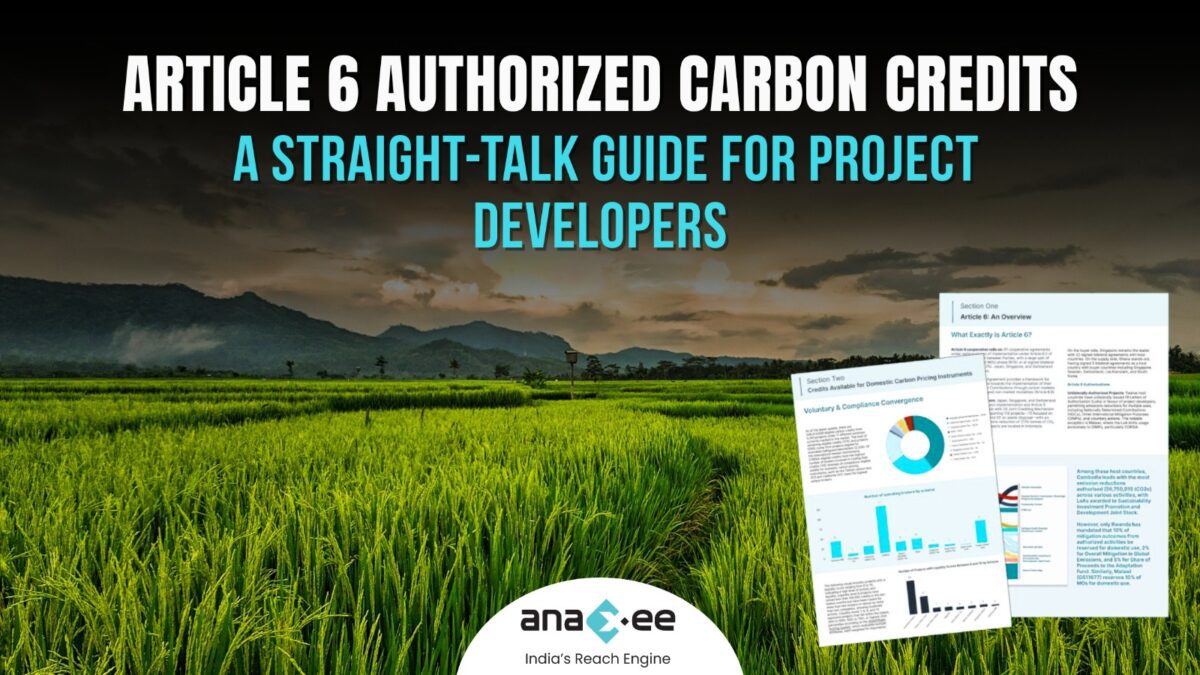Introduction: What is Carbon Finance and Why It Matters
In the fight against climate change, money matters. Without reliable and scalable sources of funding, even the most innovative climate solutions cannot reach the ground. This is where carbon finance comes in. Carbon finance refers to financial instruments and investments that are directed toward reducing greenhouse gas (GHG) emissions. It works by assigning a value to carbon reductions, making it possible to invest in projects that cut or remove emissions, and then monetize those impacts through carbon credits.

With the Paris Agreement now shaping global climate action, a specific part of the treaty- Article 6 has become the cornerstone of how international carbon finance will evolve. Understanding Article 6 is critical for project developers, investors, and governments alike. This blog dives into how Article 6 transforms carbon finance, what mechanisms it enables, and what challenges and opportunities lie ahead.
Section 1: A Quick Recap of the Carbon Market
Before we dig deeper into Article 6, it’s useful to recap how the carbon market works:
- Carbon Credits: When a project reduces or removes GHGs, it can issue carbon credits (usually one credit = 1 tonne CO2e).
- Voluntary vs Compliance Markets: Voluntary markets let companies and individuals offset emissions on their own terms. Compliance markets are regulated by laws or treaties.
- Standards and Registries: Projects are certified under standards like Verra or Gold Standard, which ensure that credits are real, additional, and verifiable.
Traditionally, these credits have been bought and sold in a fragmented system, often limited to voluntary efforts. Article 6 changes that.
Section 2: What is Article 6?
Article 6 is a part of the Paris Agreement that lays out how countries can cooperate to meet their climate targets. It introduces new flexibility mechanisms to support emissions reductions through international collaboration.
There are two key parts:
– Article 6.2: Allows bilateral or multilateral cooperation between countries. One country can transfer emissions reductions to another country to help meet its Nationally Determined Contributions (NDCs).
– Article 6.4: Establishes a centralized UN-supervised mechanism to generate carbon credits from verified mitigation projects, replacing the old Clean Development Mechanism (CDM).
Both mechanisms are meant to ensure environmental integrity and avoid double counting. The key innovation is the corresponding adjustment—a system that ensures only one country (either the host or the buyer) can count a specific reduction toward its NDC.
Section 3: How Article 6 Enables Carbon Finance
Article 6 isn’t just about rules; it unlocks entirely new pathways for climate finance. Here’s how:
- Credibility and Demand: Authorized credits with corresponding adjustments become more attractive for buyers who want to make robust climate claims.
- Compliance-Grade Voluntary Credits: Companies under pressure to meet Science-Based Targets or use only “high-integrity” credits are now looking at Article 6-aligned units.
- Public-Private Collaboration: Governments can now partner with private developers, using the finance from credit sales to support national climate plans.
- Premium Market Access: Some markets (e.g., airlines under CORSIA or entities under Singapore’s carbon tax) accept only Article 6-authorized credits, increasing the price and volume potential.
With the right legal agreements and transparent registries, carbon finance under Article 6 becomes more scalable, trustworthy, and strategic.
Section 4: The Mechanics of Carbon Finance Under Article 6
Let’s break down how a carbon finance transaction under Article 6 typically works:
- Project Development: A climate project is identified—say, reforestation, methane capture, renewable energy, or energy efficiency.
- Host Country Engagement: The project developer applies for a Letter of Authorization (LOA) from the host government.
- Standard Certification: The project is validated and verified by an independent standard (e.g., Verra, Gold Standard).
- Issuance and Labeling: Upon verification, credits are issued with a tag noting whether they are authorized under Article 6.2 or 6.4.
- Corresponding Adjustment: The host government adjusts its own emissions inventory to avoid double counting.
- Sale or Transfer: Credits are sold to another government, a company under a compliance market, or a voluntary buyer.
- Revenue Use: Funds can support the project itself or be channelled into broader climate and development goals.
The financial value here isn’t just the price per tonne; it’s also the reputational, strategic, and long-term investment appeal of credits that are aligned with global rules.
Section 5: Key Opportunities in Carbon Finance via Article 6
- Mobilizing Large-Scale Investment: Governments and multilateral banks can blend public funding with private carbon finance to scale interventions.
- Sovereign Climate Deals: Bilateral ITMO (Internationally Transferred Mitigation Outcomes) deals like Switzerland-Thailand open the door for structured cross-border climate investments.
- Finance for Hard-to-Abate Sectors: Article 6 could channel finance into sectors like agriculture, cement, or shipping, where mitigation is expensive but necessary.
- Tech-Enabled Verification: Satellite monitoring, remote sensors, and blockchain registries make tracking Article 6 credits more efficient, reducing MRV (Monitoring, Reporting, Verification) costs.
Section 6: Real-World Examples and Progress So Far
While COP 28 ended without finalized guidance on 6.2 and 6.4, several pilot projects and deals show strong momentum:
– Thailand-Switzerland ITMO Deal: The first publicized trade under Article 6.2, covering climate-smart infrastructure and transport.
– Singapore’s Carbon Tax Policy: Allows domestic companies to use Article 6 credits from approved standards for part of their liability.
– Gold Standard Authorized Credits: Credits from projects in Rwanda and Malawi have been labeled as Article 6-authorized, setting precedents for cookstove and energy access projects.
These examples show that, even as rules are finalized, the practice of carbon finance under Article 6 is already underway.
Section 7: Risks, Gaps, and Governance Challenges
Carbon finance under Article 6 is not without its problems:
- Legal Uncertainty: Different interpretations of rules and lack of standard LOA formats.
- Capacity Gaps: Many developing countries lack institutions to manage Article 6 accounting, registries, and authorization.
- Price Volatility: With overlapping voluntary and compliance demand, pricing can fluctuate.
- Equity Concerns: Will benefits flow to frontline communities, or just intermediaries?
- Double Counting Risk: Poor registry integration or weak reporting can still allow abuse.
Addressing these requires harmonized frameworks, technical assistance, and possibly a global coordination body.
Section 8: What to Watch for in 2025 and Beyond
The next 2-3 years will be crucial. Here’s what stakeholders should track:
– COP 29 and COP 30 Outcomes: Final guidance on Article 6.4 and detailed MRV protocols.
– National DNA Roll-Outs: Countries will clarify how to apply for LOAs, what projects qualify, and how corresponding adjustments will be reported.
– Emerging Buyers: CORSIA airlines, ESG-driven investors, and Asian governments will shape demand.
– Registry Interoperability: Digital infrastructure to connect national registries with international standards.
– Price Signals: Watch auctions, bilateral deals, and spot-market platforms for real-time prices on authorized credits.
Conclusion: The Decade of Carbon Finance Has Begun
Carbon finance is no longer just a niche part of climate policy. With Article 6 laying the foundation for international cooperation, it becomes a primary tool to direct money where it matters most. For governments, it’s a way to attract investment and exceed national targets. For businesses, it offers verified and credible ways to contribute to global goals. And for the planet, it means real emissions cuts, financed faster, and tracked transparently.
The next wave of climate action will be funded not just by philanthropy or aid, but by smart, rules-based carbon finance. Article 6 is the rulebook. Now it’s time to play smart.
Partner with Anaxee to Unlock Article 6 Finance
Ready to turn these insights into real‑world climate impact? Anaxee’s Tech for Climate team combines 50 000 on‑ground Digital Runners with cutting‑edge data tech to help projects secure Article 6 authorization, verify results, and access high‑value carbon finance.
Schedule a call with Anaxee as sales@anaxee-wp-aug25-wordpress.dock.anaxee.com




